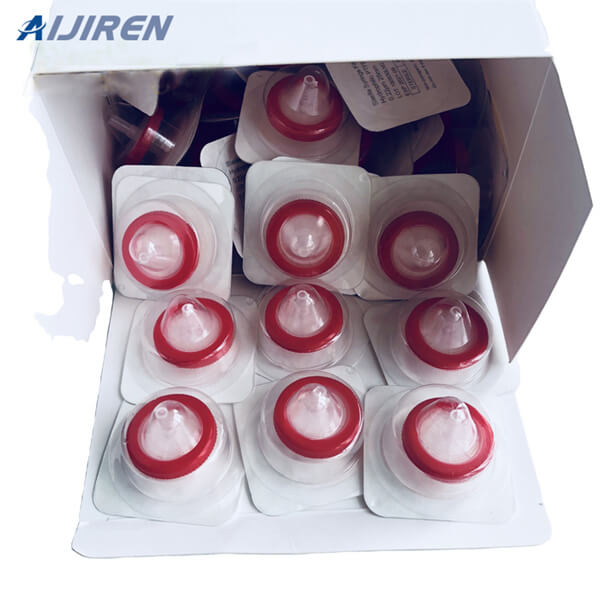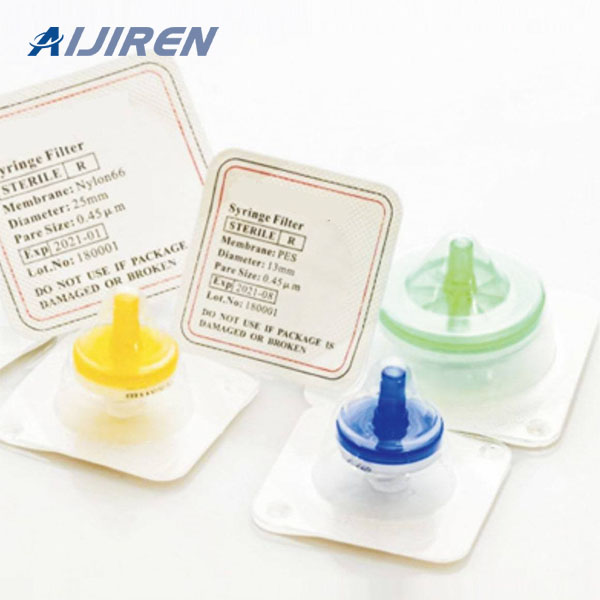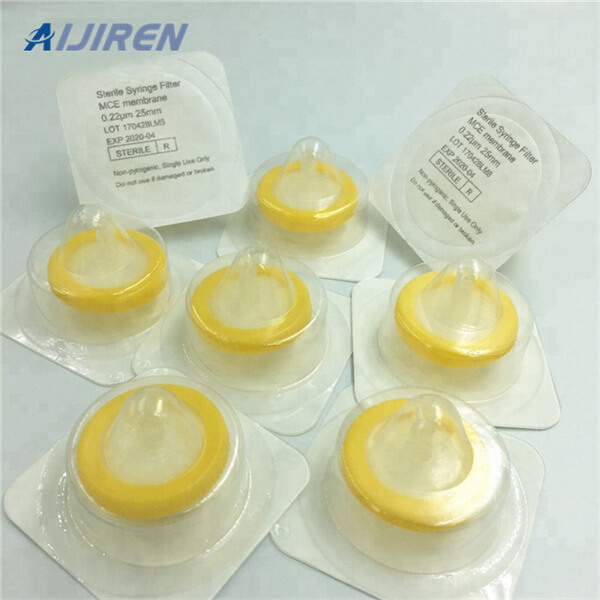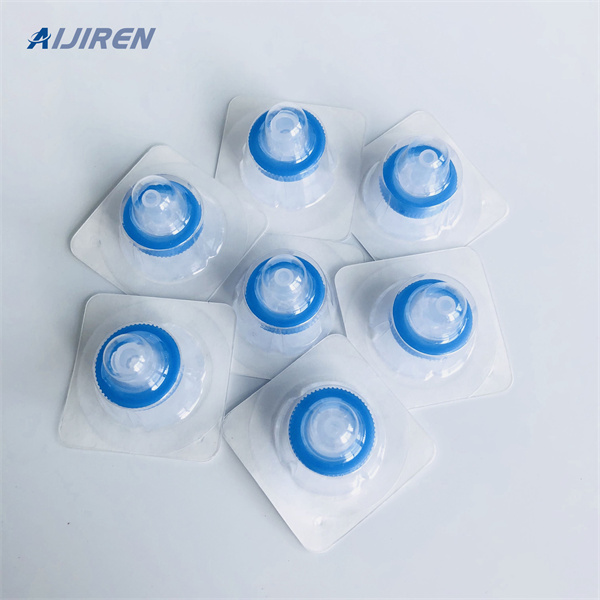
Sterile Syringe Filter are quality and excellent for cold sterilization of aqueous solutions, biological samples, and cell structure media components. 1-800-452-1261 M–F, 7:30 AM–5:00 PM CST

Sartolab ® Disposable Sterile Filter Systems and Bottle Top Filters are designed for the vacuum filtration of buffer, media and components, biological fluids, and other aqueous solutions. Key Benefits: Simple: 0.1, 0.22 and 0.45µm, Ready-to-use, sterile. Clean: Very low protein binding and low extractables.

MS ® syringe filters are simply quality filters, well packaged, and offered at a fair and competitive price. Typical applications are clarification, sterile filtration, sample preparation, sterile venting and medical applications. The syringe filters are available in many different pore sizes and with several hydrophilic or hydrophobic membrane materials.ISO9000 certified manufacturing is carried out to the highest standards, in certified clean room conditions, using the latest

Push It to the Limit! Multiple Sizes, Materials & Uses, Customized Solutions Minisart ® Syringe Filters: The Industry Leading Syringe Filter - Turning Science into Solutions. Sartorius offers Minisart ® syringe filters for a wide range of applications, including sterile filtration. Our filters are clean and safe as they are almost free of

Introduction. The Sterile Processing Department (Central Supply, or Sterile Supply as it is also known), comprises that service within the hospital in which medical/surgical supplies and equipment, both sterile and, are cleaned, prepared, processed, stored, and issued for patient care.

Sterile, Breathe-Easier Membrane Films for plates, For Cell Culture Applications, PreCut for plates, 5" x 3-1/4", Non-woven rayon membrane, 5.5 mil thick, Double scored, peel off liner, Provides a gas permeable seal, Sterile, 100/pack

Ignore the politics. Trust the science. Recent politicization of the COVID-19 vaccine development and approval process has led to a concerning loss of confidence in vital governmental institutions designed to protect the public from harm.

Available in 4, 13, 25, 33, and 50 mm diameters with a variety of membranes, Millex ® sterile syringe filters are ideal for sterilizing organic solvents, aqueous solutions or air/gas. Many sample preparation methods specify Millex® filters because of their unsurpassed quality and consistency. Millex ® filters not only feature minimal hold-up

filter capacity 150 mL, pore size 0.45 μm, fits 33 mm bottle neck: Pricing: Z358215: filter capacity 500 mL, pore size 0.2 μm, fits 33 mm bottle neck: Pricing: Z370525: filter capacity 500 mL, pore size 0.45 μm, fits 33 mm bottle neck: Pricing: Z370576: filter capacity 150 mL, pore size 0.2 μm, fits 45 mm bottle neck: Pricing

These filters are specially designed and developed for bioburden reduction and sterilization of liquids in SVP, LVP, Sterile API, Fermentation, and Vaccine manufacture. Liquid Filter Bag Our integrated technology manages the production of every filter bag, from fiber processing to the manufacture of the felt, to the final creation of the

but it can be used for moisture-sensitive materials for which dry heat (160-180°C) sterilization, and for moisture-resistant materials for which moist heat (121-134°C) sterilization is used. The efficiency with which heat is able to inactivate microorganisms is dependent upon the degree of heat, the exposure time and the presence of water

Mar 09, 2015 · punctures with syringe needles or other contaminated sharps, spills and splashes onto skin and mucous membranes, ingestion through mouth pipetting, and inhalation exposures to infectious aerosols.

At BD, we seek to usher in a new era of healthcare by bringing medical products, capabilities and solutions to every corner of the world.

Before use, the photoresist was filtrated with a 0.2 mm syringe filter to remove dust and aggregation. To avoid drying of the cells, the chamber was covered with a (15 × 15) mm coverslip. The MPL process was performed using the Photonic Professional DLW system (Nanoscribe GmbH, Germany) with an oil-immersion 63× objective lens (numerical

The mobilization of arsenic from sediments to drinking water constitutes a major toxic hazard to millions in Bangladesh and West Bengal. A number of mechanisms have been proposed for the release of arsenic into the groundwater in Bengal shallow alluvial sedimentary aquifers (1, 3, 8, 11, 12, 18, 21, 33-35, 39), including the oxidation of arsenic-rich pyrite in aquifer sediments, driven by